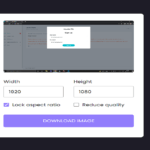Introduction
In modern web applications, users often expect real-time synchronization across multiple tabs or devices. In this tutorial, we’ll dive into creating a Synchronized Input component using React, which enables users to type in one tab and see the changes reflected in other open tabs simultaneously. Let’s explore how to implement this functionality step by step.
Explanation
1. Setting Up the Component
import React, { useState, useEffect, useRef } from "react";
import "./BroadCast.css"; // Import your CSS file
const SyncedInput = () => {
const [text, setText] = useState("");
const [syncEnabled, setSyncEnabled] = useState(false);
const broadcastChannelRef = useRef(null);
useEffect(() => {
// Initialize the Broadcast Channel
broadcastChannelRef.current = new BroadcastChannel("textChannel");
// Listen for messages from other tabs
broadcastChannelRef.current.onmessage = (event) => {
setText(event.data);
};
// Cleanup function
return () => {
broadcastChannelRef.current.close();
};
}, []);
// Handle input change
const handleChange = (e) => {
const newText = e.target.value;
setText(newText);
if (syncEnabled) {
// Broadcast the updated text to other tabs
broadcastChannelRef.current.postMessage(newText);
}
};
// Handle toggle sync checkbox
const handleToggleSync = () => {
setSyncEnabled(!syncEnabled);
if (!syncEnabled) {
// Broadcast the current text to other tabs when sync is enabled
broadcastChannelRef.current.postMessage(text);
}
};
return (
<div className="synced-input-container">
<input
type="text"
value={text}
onChange={handleChange}
placeholder="Type here..."
className="synced-input-field"
/>
<label className="synced-checkbox">
<input
type="checkbox"
checked={syncEnabled}
onChange={handleToggleSync}
/>
Sync across tabs
</label>
</div>
);
};
export default SyncedInput;Explanation:
- State Management: Utilize React’s
useStatehook to manage the text input value and synchronization toggle state. - Broadcast Channel: Use the
BroadcastChannelAPI to establish communication between tabs. - Effect Hook: Set up the Broadcast Channel and define event listeners to handle incoming messages and cleanup when the component unmounts.
- Input Change Handler: Implement a function to update the input value and broadcast changes to other tabs when synchronization is enabled.
- Toggle Sync Handler: Toggle synchronization on/off and broadcast the current text to other tabs when enabled.
2. Styling the Component
.synced-input-container {
display: flex;
align-items: center;
justify-content: center;
margin-top: 50px;
}
.synced-input-field {
padding: 10px;
border: 1px solid #ccc;
border-radius: 5px;
margin-right: 10px;
font-size: 16px;
}
.synced-checkbox {
font-size: 16px;
display: flex;
align-items: center;
}
.synced-checkbox input {
margin-right: 5px;
}Explanation:
- Container Styling: Center the input and checkbox horizontally and vertically.
- Input Field Styling: Apply padding, border, and border-radius to the input field.
- Checkbox Styling: Adjust the font size and alignment of the checkbox label.
Conclusion
By following this tutorial, you’ve learned how to create a Synchronized Input component in React, allowing users to seamlessly share input data across multiple tabs. This feature enhances collaboration and user experience in web applications. Feel free to customize the component’s appearance and behavior to suit your project requirements.
Happy coding!

